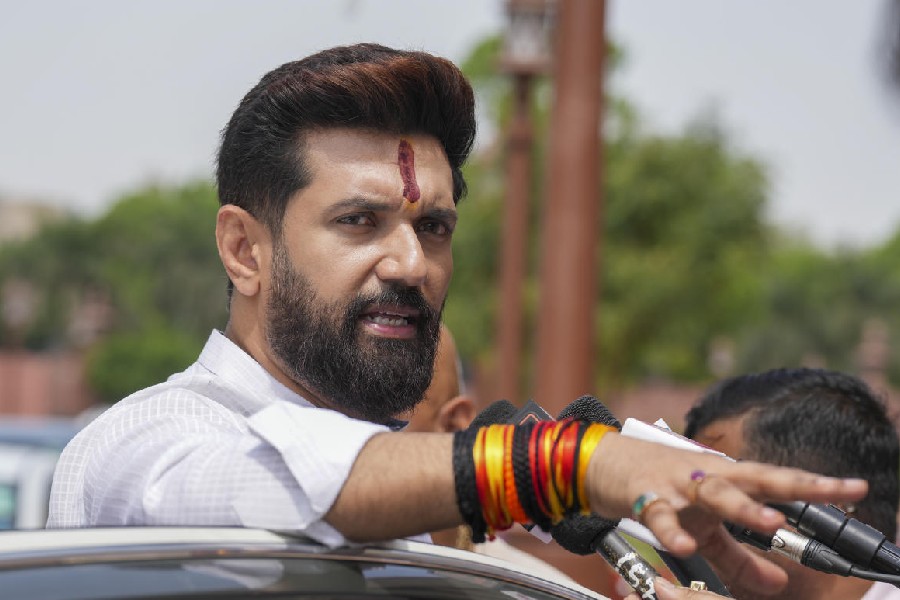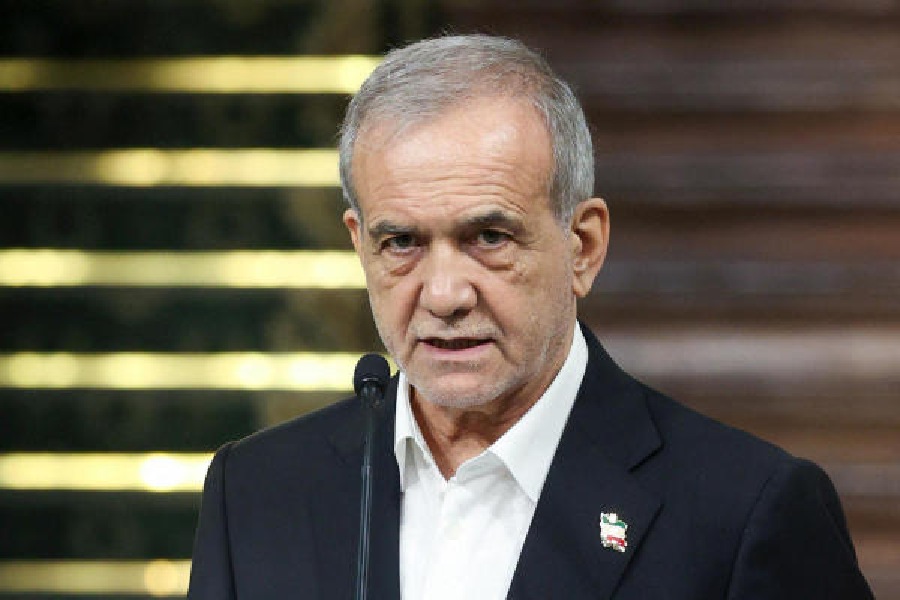 |
| Madhu Neotia checks out a Bulgarian graphic art on display at Academy of Fine Arts. (Anindya Shankar Ray) |
Visions of an exotic and opulent India were on display as part of a wonderful collection of rare prints exhibited at The Harrington Street Arts Centre recently.
Curated by artist-scholar Paula Sengupta from the Delhi Art Gallery and Pradip Bothra’s print collections, The Printed Picture: Four Centuries of Indian Printmaking, is one of the first attempts to give a comprehensive overview of the history of this multifaceted, though little recognised, visual art medium.
Printing began in India when European Jesuits opened presses in Goa in the 16th century. The Jesuits needed an abundance of Christian texts and though many of these had illustrations and embellishments it was not until the arrival of the European artist, adventurers and their broadsheets that the notion of using this medium to create an independent work of art entered India.
On view were works of William Daniell,W Carpenter and others; examples of the subsequent Bazaar School which were produced by the unschooled technicians employed at the colonial and indigenous presses mushrooming in several parts of the country, where the classical, the folk and the popular came together. The exhibition showcased myriad forms of printmaking illustrations in vernacular texts, product labels like matchbox covers and calendars.
According to Sengupta, who has a doctorate in printmaking and teaches the subject at Rabindra Bharati University, the country’s first artistic print was Gaganendranath Tagore’s lithographic album Adbhut lok.
The show doesn’t have Adbhut lok but it chronologically showcases works by Raja Ravi Varma, Gaganendranath, Abanindranath, Nandalal Bose, Benode Behari Mukherjee, Ramkinkar Baij, Mukul Dey, Sushil Sen, Ramendra Nath Chakraborty whose pioneering works inspired others like Haren Das, Somnath Hore and Chittaprosad among others.
The section on regional modernist schools included works by the likes of M.F. Husain, F.N. Souza, Rini Dhumal, Anupam Sud and Amitabha Banerjee.
A two-volume book by Paula Sengupta featuring nearly 400 plates (only 170 works could be accommodated at this venue) and a foreword by veteran art writer Pranabranjan Roy was launched on the occasion.
Bulgarian art
 |
| A print exhibited at Harrington Street Arts Centre |
Bulgarian artists found new patrons in the city as an exhibition of graphics by 26 artists was inaugurated at Academy of Fine Arts on Thursday. The event was organised by Vishambhar Saran, the honourary consul of the Republic of Bulgaria and the chairman of VISA group, to mark the 105th anniversary of the declaration of independence of Bulgaria.
Bulgaria’s ambassador in India, Borislav Kostov, and his wife Manaya came down from Delhi for the inauguration. Other guests included artists Sunil Das and Ramananda Bandopadhyay, both of who expressed surprise at the variety of emotions depicted through the artworks. Kostov was happy that the exhibition was being held in the “cultural capital of India”. “The artworks represent a turning point in Bulgarian art. But every exhibit is an expression of the artist’s personal ideas and emotions,” he added.
One work that caught everyone’s eye was Elena Panayotova’s Private Correspondence — an assortment of airmails artfully presented in an interesting visual. Nikolay Maystorov’s dark yet beautiful Angel impressed many too.
The exhibition is on till September 25.
Contributed by Sebanti Sarkar











